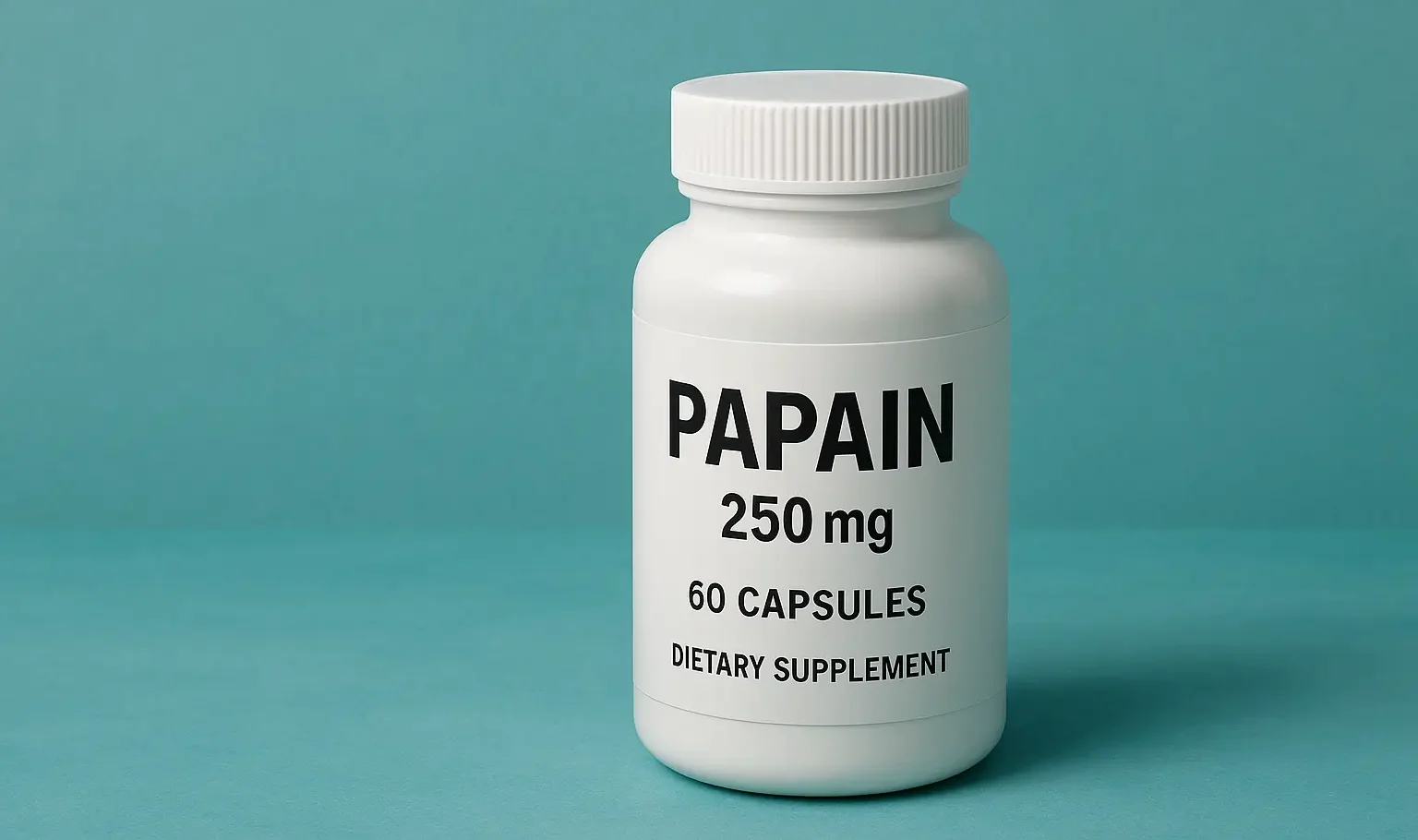- Papain is a proteolytic enzyme from papaya latex used for protein digestion and wound healing.
- Papain aids in digestion, tenderizes meat, and is applied in pharmaceuticals and cosmetics.
General Information of Papain
- Synonyms: Papaya proteinase I
- Biological Source:
- Derived from the latex of unripe fruits of Carica papaya.
- Family: Caricaceae
- Geographical Source:
- Grown in India, Sri Lanka, Thailand, Indonesia, Nigeria, Brazil.
Macroscopical Characters of Papain
- Color: White to light yellow powder.
- Texture: Fine, dry powder or crystalline.
- Taste: Slightly bitter.
- Odor: Mild characteristic odor.
Chemical Constituents of Papain
- Proteolytic enzyme: Papain (Cysteine protease).
- Other components: Chymopapain, Carbohydrates, Calcium, Sulfur-containing amino acids.
- Molecular weight: ~23,400 Da
Mechanism of Action
Papain breaks down proteins into peptides and amino acids by cleaving peptide bonds. It works over a broad pH range (3-9), making it highly effective.
Preparation
- Collection of Latex:
- Unripe papaya fruits are cut, and latex is collected in clean containers.
- Purification:
- Latex is dried in sunlight or by spray drying.
- Grinding & Packaging:
- The dried product is finely powdered and stored.
Evaluation
- Solubility: Soluble in water, insoluble in alcohol.
- Purity Tests:
Preservation & Storage
- Stored in airtight containers at low temperatures (4°C to -20°C) to maintain activity.
Therapeutic Uses
- Digestive aid (used in enzyme supplements for indigestion, gas, bloating).
- Meat tenderizer (softens meat by breaking down muscle proteins).
- Wound debridement (removes dead tissue from wounds).
- Anti-inflammatory (reduces swelling and pain in trauma, surgery).
Commercial Utility
- Used in pharmaceuticals (tablets, creams, enzyme therapy).
- Used in food industry (meat tenderizers, beer clarification).
- Used in cosmetics (exfoliating creams, skin-care products).

